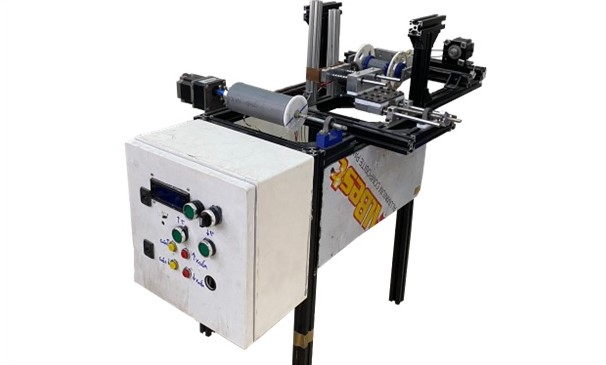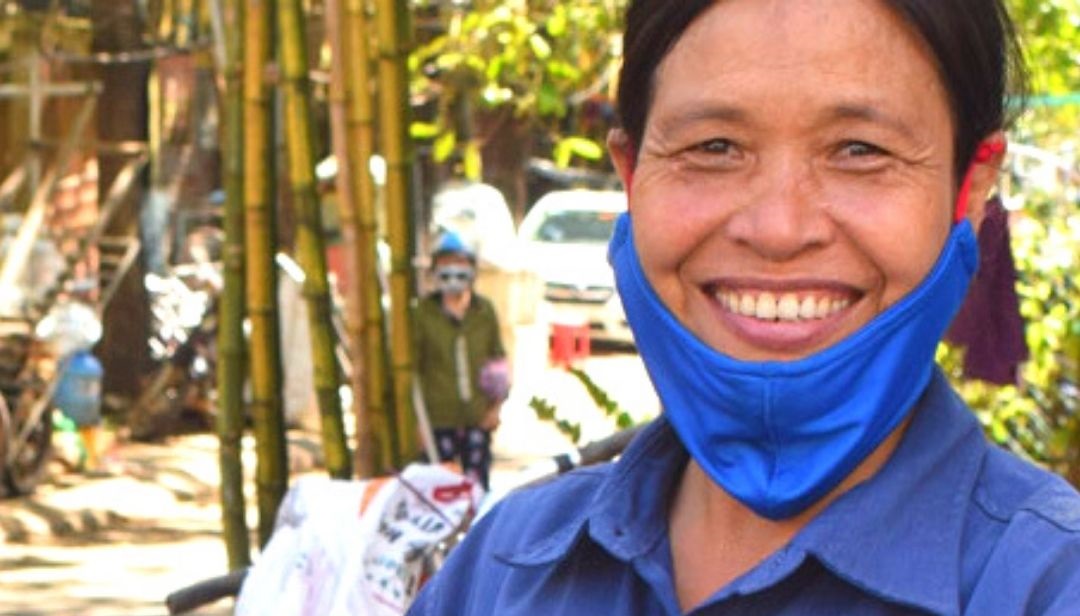A twisting rope machine
Problem
The use of single-use plastic packaging in the food industry is inevitable because they bring a lot of convenience to consumers and play an important role in helping customers transport and store food. Along with the growth of online shopping and food ordering, the demand for packaging is increasing. According to a report by the World Bank in 2022, 44% of the 3.1 million tons of waste released into the environment each year in Vietnam comes from takeaway food packaging, creating a huge burden for domestic waste management. These types of packaging waste have a complex structure due to their multi-layer design, leading to a very high rate of material loss during recycling and making them uneconomical to recycle. Additionally, at least 10% of untreated plastic waste enters the ocean through waterways and seas. Once leaked into the marine environment, this plastic waste not only harms marine life but also poses serious threats to the living environment and human health when it decomposes into microplastic particles. Therefore, finding sustainable solutions to this problem is urgent.
Meanwhile, certain industries require twisted nylon yarn for the production of various products. For example, the textile or handicraft industry utilizes it to create rings, keychains, and bags, while the construction and engineering sectors rely on nylon fibers to manufacture large nets capable of transporting heavy construction materials from one location to another. Currently, businesses are actively seeking more sustainable alternatives to meet policy and regulatory trends in material standards.
Solution

A nylon rope twisting machine. Source: Nguyen Tien Uoc.
Introducing an innovative solution, Nguyen Tien Uoc and two companions have developed a nylon rope twisting machine that addresses the challenges associated with waste management of low-value plastic bags. By recognizing the potential of plastic waste as a valuable resource for input materials in manufacturing transmission lines, this machine effectively reduces the strain on primary plastic raw materials.
The machine comprises several key components, including:
- Twisting unit: Equipped with a rotating motor and torsion frame, this unit generates the required torsion for the rope.
- Heating element: Comprising two burners attached to an aluminum bar and a press slide, the heating element ensures a secure and tight braid for the ropes, preventing them from unraveling after twisting.
- Winding unit: This unit is responsible for winding the treated ropes while facilitating rope stretching. It consists of a rotary motor attached to a spool.
- Machine controller: The machine controller incorporates a screen that monitors technical parameters, allowing for adjustments to burner temperatures and spindle speeds.
To produce nylon fibers using the machine, the process begins by cutting packaging waste of the same type into long, thin threads using adhesive tape. Various materials, such as nylon bags, instant noodle packaging, snack shells, adhesive tapes, and bottle labels, can serve as starting materials. The packaging waste strip is then threaded through the centering hole of the coil twister, securely fastened to the keychain, and connected to the coil motor unit. By utilizing the machine control interface, users can initiate the machine, adjust temperature settings, twisting speed, and rolling speed based on the specific material. The plastic strip is pulled through the twister and heater, resulting in plaited nylon ropes of different colors and textures as the output.

(From left to right) Final products from adhesive tape, packaging of instant noodles without foil, with foil, glass and flexible packaging. Source: Nguyen Tien Uoc.
Advantages of this machine include:
- User-friendly design and easy assembly, enabling widespread adoption among a diverse user base.
- Low power consumption, with a rating of only approximately 200W.
- Manufacturing cost ranging from VND 1.5 million to VND 2 million.
- Easily replaceable and machinable machine parts.
- The thermostat feature facilitates precise control over the heating process, accommodating various types of input materials.
Currently, when operated at a temperature of 175 degrees Celsius, the machine is capable of producing 1 meter of rope every 1.5 minutes. The resulting ropes can be utilized in crafts, knitting, and fashion accessories.
For further guidance and references, please refer to the following additional resources:
- Instructions for using flexible packaging and glass as input materials: “Plastic Bag Twisting Machine – Part 1: Plastic Bags and Glass Bags” on YouTube.
- Instructions for using foil and foil-free packaging as input materials: “Plastic Bag Twisting Machine – Part 2: Foil Bags and Bags without Foil” on YouTube.
- Instructions for using packaging tape and bottle body labels as input materials: “Plastic Bag Twisting Machine – Part 3: Adhesive Tape and Bottle Cover” on YouTube.
- Instructions on operating the yarn twisting machine: “Nylon Bag Twisting Machine – Part 4: How to Operate the Machine” on YouTube.
- Machine structure: “Plastic Bag Twisting Machine – Part 5: Structure of the Machine” on YouTube.
- Technical drawings: “Machine Structure Drawings.pdf” on Google Drive.












